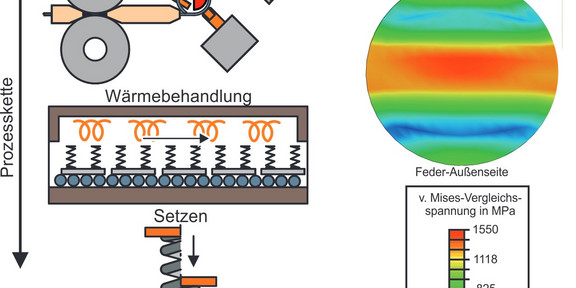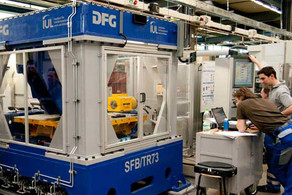Development of a Model to Predict Geometry Changes in Spring Manufacturing Based on Plasticity Theory Considering Heat Treatment
- Profil- und Blechumformung
- Umformtechnische Grundlagenforschung
- Materialcharakterisierung
- Industrienahe Forschung

| Funding | AiF / IGF |
| Project | IGF 21490 N |
| Contact | Philipp Rethmann M. Sc. |
Helical compression springs are manufactured in a process chain consisting of coiling, heat treatment, and pre-setting (see Figure a). Residual stresses are generated during the forming of the spring wire in the coiling machine (see Figure b). A thermally induced reduction of the yield stress during the subsequent heat treatment ensures a partial reduction of these residual stresses and a change in the spring dimensions. In the final step of pre-setting, the spring is subjected to plastic loading so that the length decreases and torsional residual stresses are introduced. The material properties of the spring wires, which are determined close to the process by tensile and torsion tests, have a major influence on the residual stresses and the resulting changes in shape. On the basis of experimental and numerical investigations of the sub-processes, a (semi-) analytical process model is developed by which the description of the geometry changes is possible. The model can, thus, be used to support the setup process of automatic spring coiling machines.







![[Translate to English:] [Translate to English:]](/storages/iul-mb/_processed_/0/f/csm_Forschung1_2880x640_patrick_7b98a9cf47.png)